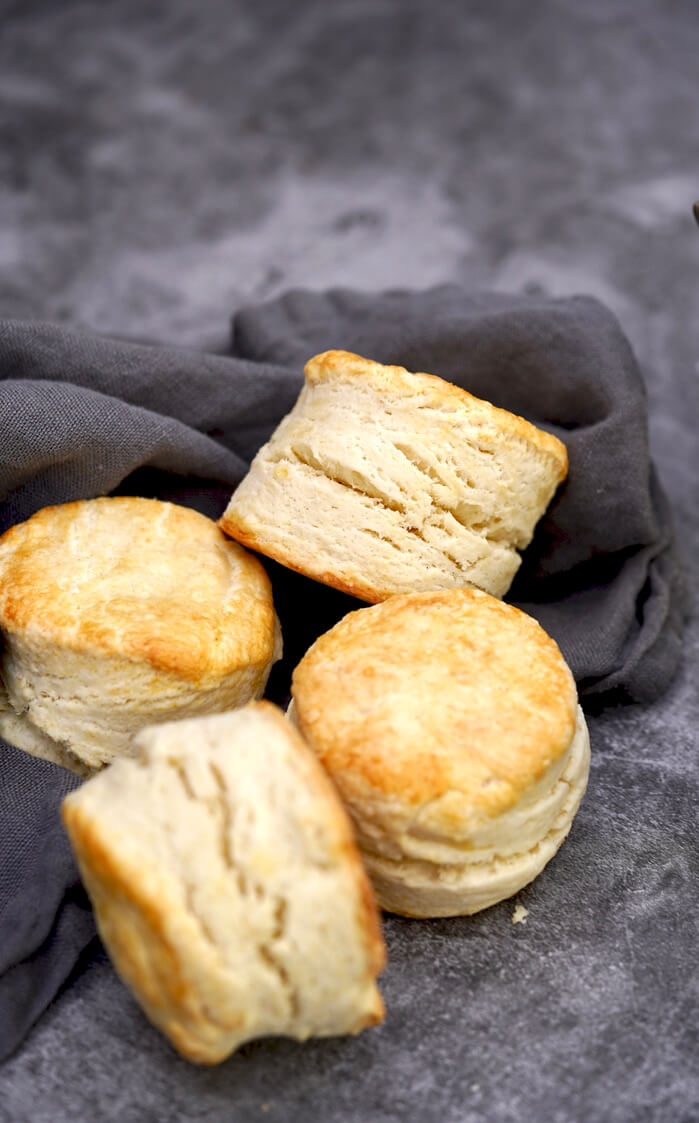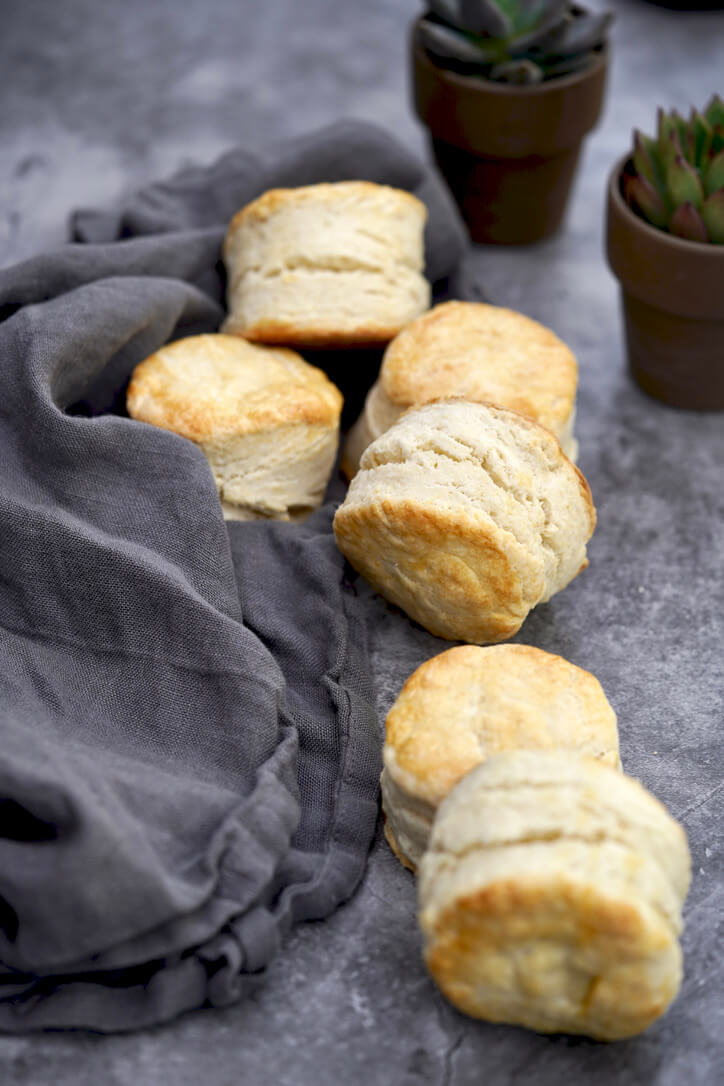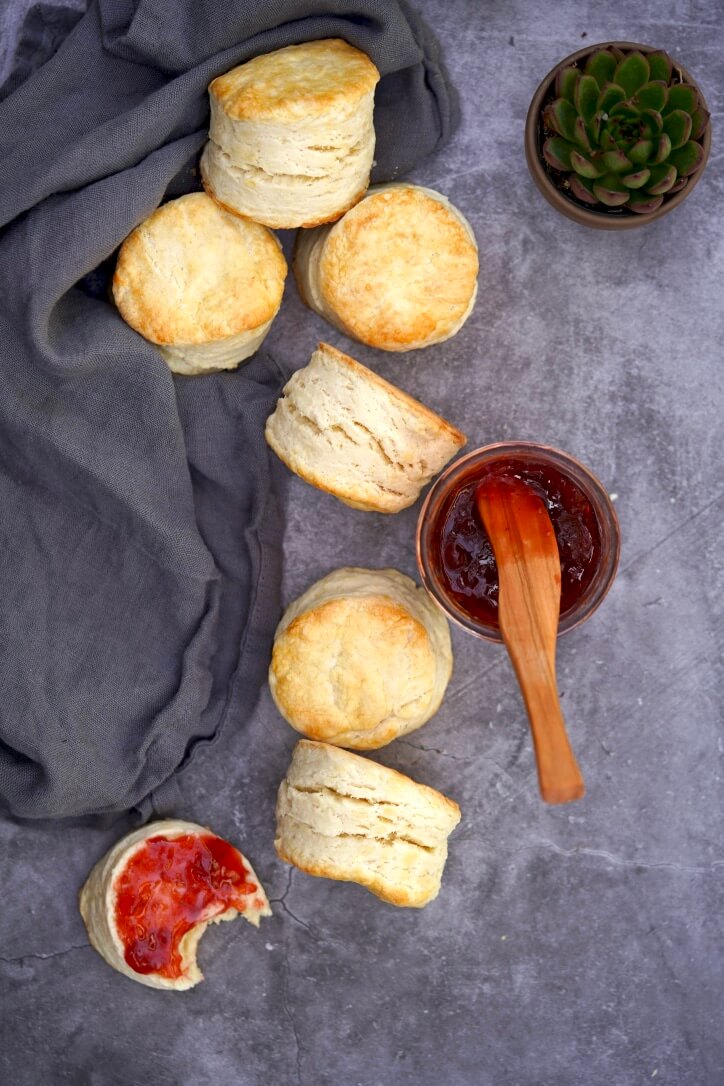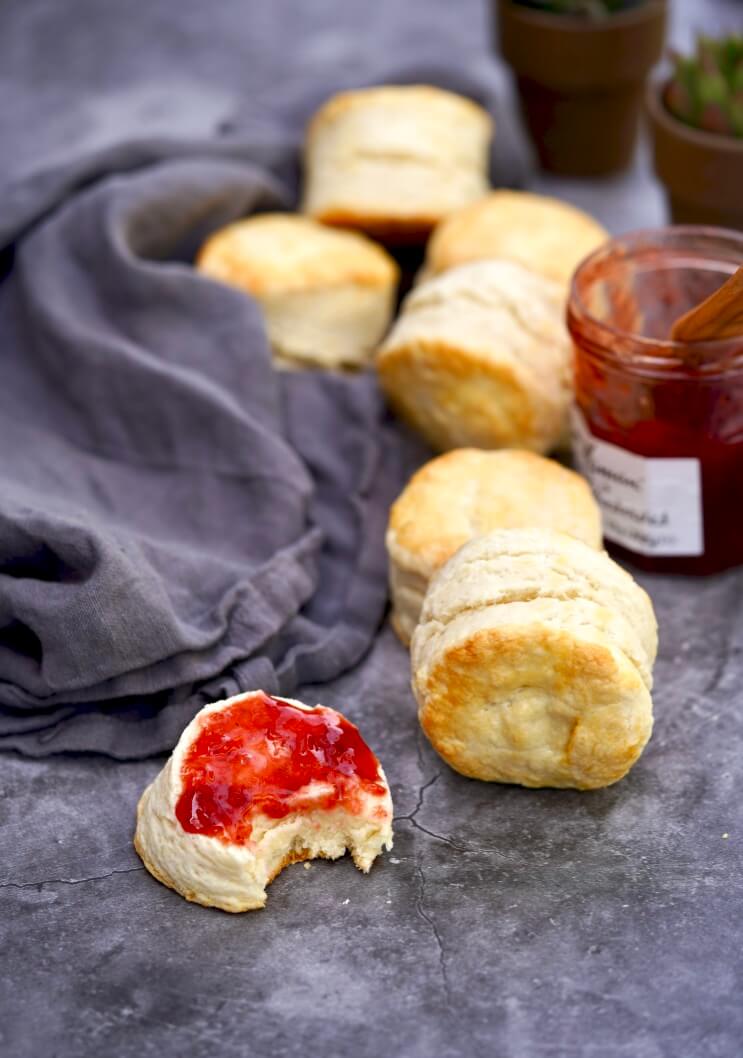Buttermilk Biscuits

Homemade buttermilk biscuits are a true weakness of mine. But biscuits, I’ve learned, are an incredibly personal thing. Those who love them, have strong options, and I get that. Historically, biscuits were considered a delicacy and so revered, in the pre-Civil War South, that they were typically reserved only for Sunday night dinners. To me, they are not a delicacy, but rather a comfort food. And when the whole Covid nightmare began, I found myself making and eating homemade biscuits often.
For the non-bakers out there, biscuits are considered a “quick bread”; meaning, they don’t need time to rise before baking. Made up of only a few simple pantry ingredients, biscuit dough should always be folded by hand (never rolled) to incorporate air, which expands while baking, and causes the biscuit to rise. In the South, biscuits are traditionally served as a side dish with fresh butter but are also common at breakfast time served alongside spreads such as; molasses, maple syrup, sorghum syrup, honey, jam, or jelly.
In 1952 Colonel Sanders opened his first Kentucky Fried Chicken in Utah, taking biscuits out of the South for the first time. The popularity of biscuits was quick to explode and before too long, they had their very own food holiday. Most don’t know it, but National Buttermilk Biscuit Day was just last weekend, on May 14th.
The Best Flour For Biscuit Making
Dating back to 1883, the gold standard biscuit flour was White Lily, which was milled in the heart of the South, in Knoxville, TN. White Lily flour is made with soft wheat and a much lower protein content than northern kinds of wheat. But why is lower protein so important? The answer is, that protein, in flour, is what leads to the development of gluten (the proteins that give the dough its elasticity). You want a little gluten to give your biscuit structure, but not too much because that traps the fibers and doesn’t allow the leavening to make the biscuit rise as much as you ideally want.
If you can’t find White Lily, which I highly suggest using, there’s a trick I learned that works almost as well. Mix half all-purpose flour with half pastry flour, and that’s a pretty good compromise in a pinch. All-purpose flour has a protein content of around 12% while pastry flour is closer to 6%. Combine them, and your result has a protein number of 9%, just about the same level as what made White Lily so unique. But just as important as the flour, the technique of making biscuits should not be overlooked.
Biscuit Making Tips
- Do not overwork your dough. Less is best.
- Make sure that your ingredients are really cold. Try freezing your butter for a little bit before grating it.
- Use your hands to gently combine the butter with the flour. Softly crumble the butter and flour together so that you end up with a pebbly dough that still has plenty of discrete chunks of butter. (When these pebbles melt in the baking process, they will leave those delicious buttery pockets of air that make a flaky biscuit.)
- When “cutting” your biscuits, never twist the cutter to release the biscuit (turning causes the gluten chains to lock and prevent the final product from rising). Just push the cutter straight down and lift it straight up.
- Keep your cutter floured, this helps the biscuits pop out without resistance.
Buttermilk Biscuits
Ingredients:
- 3 1/2 cups all-purpose flour (I use White Lily )
- 1/1-1 teaspoon sugar
- 1 tablespoon kosher salt
- 1 tablespoon baking powder
- 1 teaspoon baking soda
- 1 1/4 cups cold unsalted butter, grated
- 1 cup cold whole fat buttermilk
- 1 large egg, lightly beaten, for egg wash
Directions:
- Preheat oven to 425 degrees F. Line a baking sheet with parchment paper and set aside.
- In a large mixing bowl, add the flour, sugar, salt, baking powder, and baking soda. Mix well to blend. Using a pastry blender (or two forks) cut in cold butter until mixture is crumbly. Add the buttermilk and continue to mix until a shaggy dough forms.
- Place the dough onto a lightly floured surface. Using your hands, gently form the dough into a rectangle, and using a chef's knife cut into fourths. Stack each fourth on top of each other and pat down into a rectangle again. Repeat this process at least 3 more times.
- Pat the dough to 1-inch thickness. Using a 2-inch round biscuit cutter dipped in flour, cut the dough but very importantly, do not twist. Reform the dogs as needed until you have 8 biscuits in total.
- Place the biscuits a few inches apart on the prepared pan. Place in the refrigerator until cold, about 10 minutes. Using a pastry brush, lightly brush the tops with egg wash.
- Place in the oven and bake until golden brown, about 15 minutes. Serve warm with butter and jam





